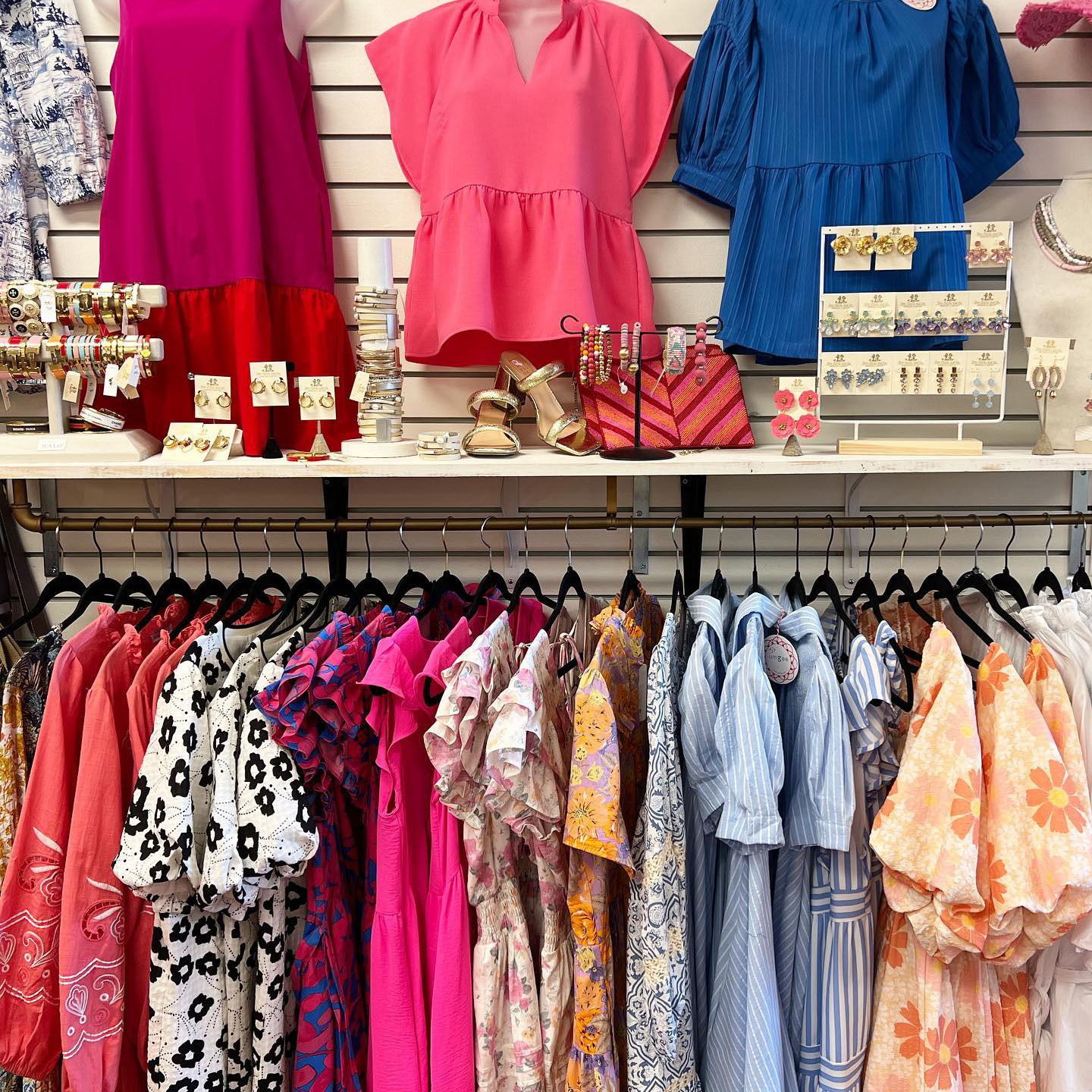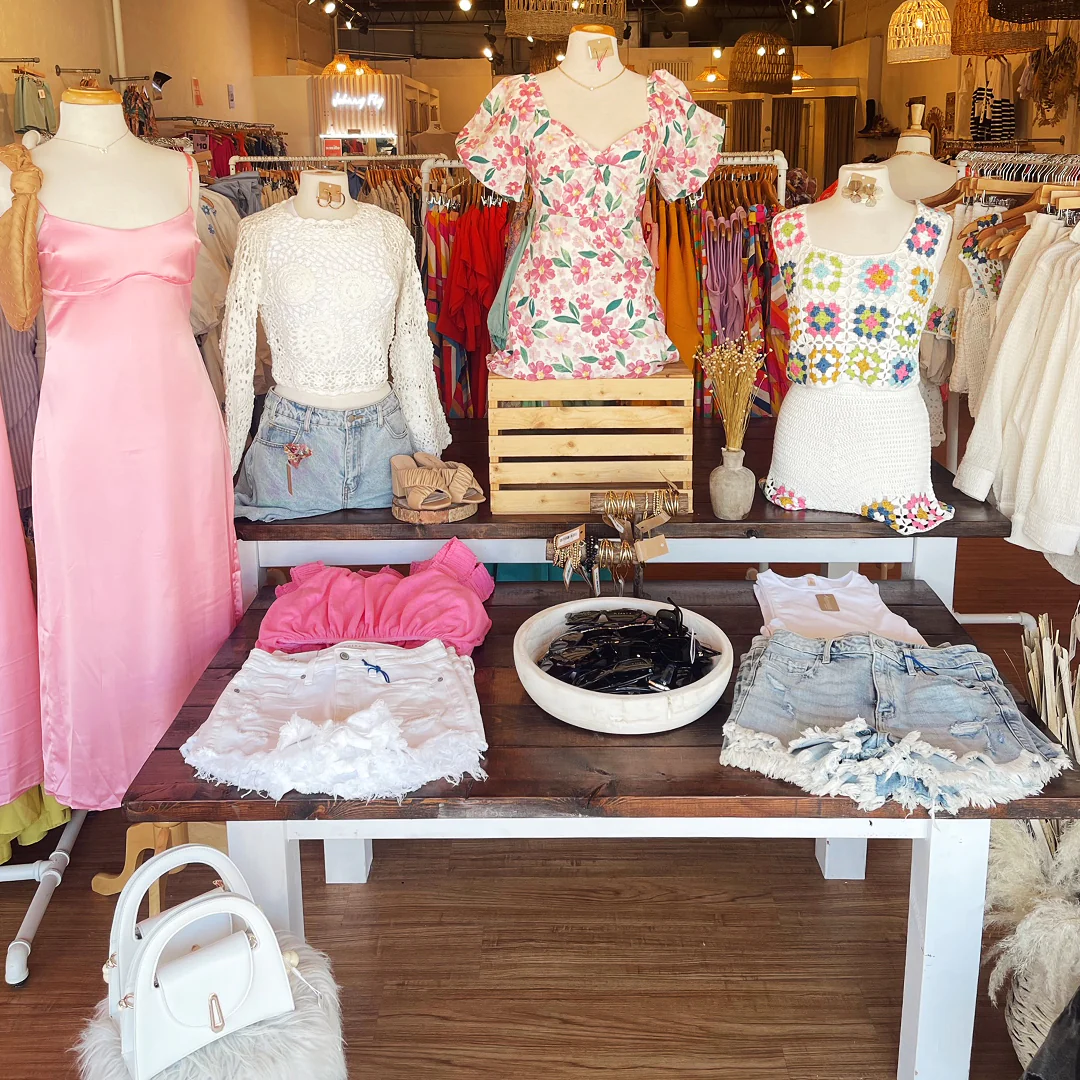Just how to Style Your Clothing with Boutique Fashion Locates
Wiki Article
Exploring the Evolution and Influence of Clothes on Modern Fashion Trends
The evolution of apparel has substantially affected contemporary style trends, merging historic precedents with cutting-edge innovations. Famous numbers like Coco Chanel and Yves Saint Laurent reinvented the fashion industry by presenting principles that prioritize comfort and availability, which proceed to resonate today.Historical Fashion Influencers
In the tapestry of style history, particular figures have actually left an indelible mark, forming the fads and styles that specify whole periods. Coco Chanel, a revolutionary developer, redefined women's style by introducing comfortable, classy clothes that departed from limiting corsets.Elsa Schiaparelli is one more pivotal figure, renowned for her progressive designs that integrated surrealist art, teaming up with Salvador Dalí to produce whimsical pieces that tested standard appearances. Her innovative usage of shade and bold patterns reverberates in modern style. Yves Saint Laurent, meanwhile, equalized high style with prêt-à-porter collections, bringing path styles to the masses and setting a criterion for modern-day ready-to-wear lines.
These dreamers, to name a few, not only changed style in their times yet additionally set withstanding fads that reverberate in today's garment industry, supplying a structure whereupon modern-day designers remain to introduce and construct. Their heritages underscore the significance of imagination and bold in style's ever-evolving story.
Technical Advancements in Fashion
Amidst the dynamic landscape of the fashion industry, technological improvements stand at the leading edge of advancement, improving exactly how developers produce and consumers engage with fashion. The integration of 3D printing has changed style procedures, allowing developers to explore intricate frameworks and sustainable materials that were formerly impossible. This modern technology promotes quick prototyping, minimizing waste and accelerating manufacturing times.
Smart textiles, installing technology into textiles, are likewise changing the industry. Advancements like self-cleaning and temperature-regulating materials supply enhanced performance and convenience. Wearable innovation, incorporating functions like fitness tracking and interaction, includes a new dimension to style, combining visual appeals with practicality.
Social Shifts and Style
As technical improvements remain to improve the fashion business, social changes are just as influential, redefining style and consumer preferences. In the last few years, the rise of social networks systems has actually sped up the circulation of global style fads, permitting varied cultural impacts to merge and exist side-by-side. This electronic interconnectivity has actually assisted in the fast exchange of ideas, resulting in a more eclectic and inclusive analysis of design that shows the multifaceted nature of modern culture.Social understanding and gratitude have prompted designers to attract motivation from a broader spectrum of historic and ethnic contexts, integrating traditional concepts with contemporary appearances. This combination has actually led to fashion that reverberates with a broader audience, advertising a feeling of identity and belonging throughout various demographics. Furthermore, the increasing need for personalization has driven brand names to provide customizable alternatives, allowing customers to reveal originality while showing their social heritage.
In addition, moving social values have actually affected style, with inclusivity and diversity becoming main themes. The sector has started to accept versions and influencers of different physique, ethnic backgrounds, and sex identities, tough traditional elegance requirements. This makeover highlights the power of social shifts in forming the future of style, as style comes to be a much more genuine expression of cumulative and personal identity.
Sustainability and Modern Layout
While the style market proceeds to progress, the imperative for sustainability has become increasingly urgent, influencing modern design practices. The rise of slow fashion, which emphasizes top quality over amount, urges customers to invest in ageless pieces instead than short-term fads.Additionally, modern design is characterized by its innovation in decreasing waste and advertising circularity. Methods such as zero-waste pattern cutting and 3D knitting are getting traction, permitting developers to produce garments with very little fabric wastefulness. In addition, brand names are why not try these out adopting transparent supply chains, making certain my sources liability and promoting consumer count on. This method not only reduces environmental influence yet likewise boosts the social obligation of fashion residences.

Future Trends in Fashion

Sustainability will certainly remain to be a driving pressure in forming future fashion fads. The market is increasingly embracing environmentally friendly products and honest manufacturing techniques, responding to an expanding consumer demand for responsible methods. Developments such as bio-fabricated products and closed-loop recycling systems are established to redefine how garments is produced and taken in, reducing ecological impact while preserving design and quality.
Social shifts, consisting of the rise of inclusivity and diversity, will certainly also play a crucial function. As culture becomes a lot more familiar with social problems, fashion is expected to come to be a platform for expression and modification. Developers will likely concentrate on creating collections that click here to find out more reflect a wider series of experiences and identifications, promoting representation and availability.
Final Thought
The evolution of clothes dramatically influences modern fashion patterns, where historic impacts merge with contemporary designs. Secret figures like Coco Chanel and Yves Saint Laurent have actually redefined design, while technological advancements such as 3D printing and clever fabrics expand creative possibilities. Cultural changes in the direction of inclusivity and sustainability urge brand names to accept and take on honest practices diversity. This ongoing development highlights fashion's function as a mirror to societal values and technological improvement, recommending a future rich with advancement and inclusivity.The advancement of apparel has actually substantially influenced modern style fads, merging historical criteria with cutting-edge innovations.Among the vibrant landscape of the fashion industry, technical improvements stand at the leading edge of innovation, improving exactly how designers develop and customers engage with style.While the style market proceeds to progress, the necessary for sustainability has become significantly urgent, affecting contemporary design techniques. As sustainability ends up being ingrained in contemporary design, it leads the way for an extra accountable and conscious style industry.
The advancement of clothes significantly affects modern fashion fads, where historical impacts merge with modern designs.
Report this wiki page